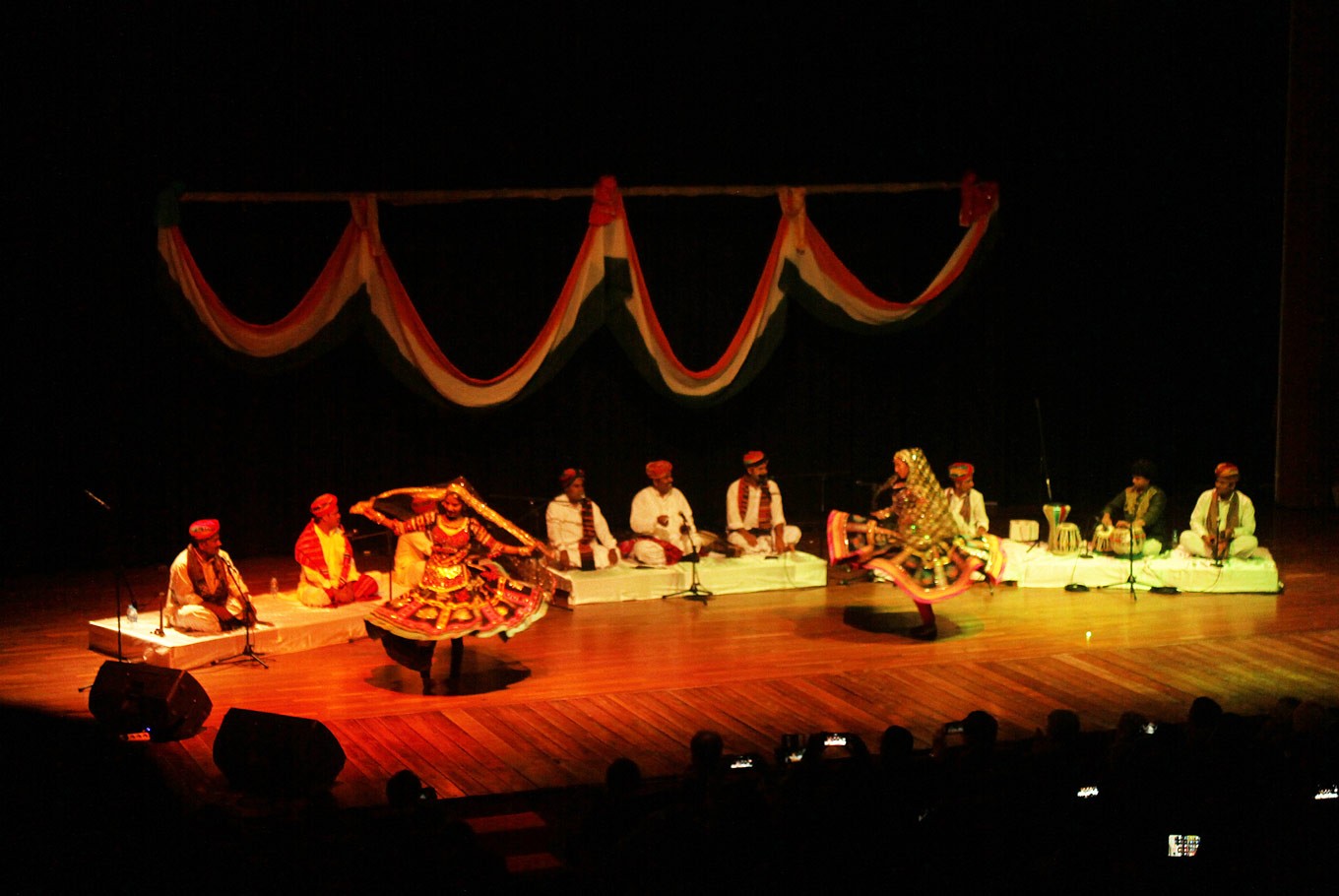Popular Reads
Top Results
Can't find what you're looking for?
View all search resultsPopular Reads
Top Results
Can't find what you're looking for?
View all search resultsRajasthani music, perfect harmony
An all-male musical ensemble, plus two dancers, from the border state of Rajasthan in India, demonstrates both musical and social harmony running deep in their traditional arts
Change text size
Gift Premium Articles
to Anyone
A
n all-male musical ensemble, plus two dancers, from the border state of Rajasthan in India, demonstrates both musical and social harmony running deep in their traditional arts
In an era rife with intergroup conflicts in every part of the world on a scale we have never quite witnessed before, it is good to reflect upon the fluid interaction among humans from different social identities embodied in our traditional arts.
One such example is a music and dance group hailing from Rajasthan, a state in western India bordered by the Pakistani provinces of Punjab and Sindh, led by Khete Khan.
The group has just finished its first Indonesian tour including shows in Polewali Mandar in West Sulawesi, Yogyakarta and Jakarta.
The group performed at the Usmar Ismail Hall (PPHUI) in Kuningan, South Jakarta, on the evening of Aug. 11.
The members of the all-male music group are Khete Khan, Chhuge Khan, Ghenwar Khan, Barkat Khan, Sawai Khan, Sabir Khan, Rafik Khan and Ghulam. Their performance is accompanied by two dancers, Pushpa and Malka.
They performed a unique blend of music influenced by Sufi, Muslim and Hindu cultures, in a musical style deeply rooted in Indian classical and folk music.
The performers are all Muslim and so the Islamic music characteristics came through very strongly in their performance.
“Indonesia has the biggest Muslim population [in the world], and we feel there can be a common understanding of music [between us],” Khete Khan told The Jakarta Post backstage after the performance.
Most of the songs, which are backed up by rich layers of percussion (tabla,khadtaal and morchang) and string instruments (kamaicha), evoked the hypnotizing call to prayer and the chanting of a muadzin.
The strong vocals of the male singers, influenced by Middle-Eastern singing styles, sent chills down the spine.
According to Khan, the music has been passed down for the last seven generations of Rajasthani musicians and has a long cultural background. The Sufi spiritual tradition, through its verses and poetry, has also influenced the region’s musical style.
“Aside from performing songs influenced by Sufi spirituality, we also perform songs from the Hindu tradition, including its mythology and gods, because the Muslim Rajasthani musicians perform for their jajmans (patrons), who were mostly Hindu kings and their families,” Khan explained.
Rajasthani musicians used to be so valuable to their patrons that they were not allowed to perform for the public, because they believed that the musicians would lose their voices if they did so.
In the last 40 or 50 years, however, the Indian government has started to encourage them to showcase their talents to a public audience.
During their performance, the audience was carried from the lowest to the highest tones, from the most energetic to the slowest tempos and from the happiest to the most melancholic moods. Their performance showcased an exploration of different musical structures, the diversity of which identifies with the characteristics of classical and folk Indian music. All these musical possibilities were explored in a well-transitioned compositional structure.
The instruments were played with such agility as well.
Khan played a khadtaal, an instrument comprising four wooden pieces that have to be held carefully on both palms of the hands, and are beaten together to produce a rhythm perfectly synchronized with the other players. It is a unique instrument played only in Western India.
As with other classical and folk Indian musical performances, this ensemble also performed jazz-like improvisations, considerably extending the length of its compositions.
A piece called “Khadtaal,” for example, featured a long improvisation with a call-and-response pattern between the percussionists. The audience cheered in amazement when the percussionists performed their parts at impossible speeds.
During the final songs, the two female dancers entered the stage to perform what is known as the Kalbelia dance, which has been influenced by the snake charmers of India. Since the use of live cobras for the snake dance is now prohibited, the dancers now create the intricate movements of the snake with their bodies.
The two dancers moved very energetically and radiated happiness as they moved around, shaking their hips, backed by the final song called “Dama Dam Mast Kalandar” — with a heavy Sufi influence — in which all the male singers sang in unison, in perfect harmony with the rich instrumental sounds played by the other musicians.
The musical harmony also represents the fluid interaction among different social groups — religious, ethnic — in the Rajasthan area that has been the way of things for many years, despite the social categorizations that people like to make.
“Here, we have no social barriers. We are all people living in the same land. Geographical and identity borders are all man-made. Naturally, Muslims and Hindus interact seamlessly with each other,” Khan said.











